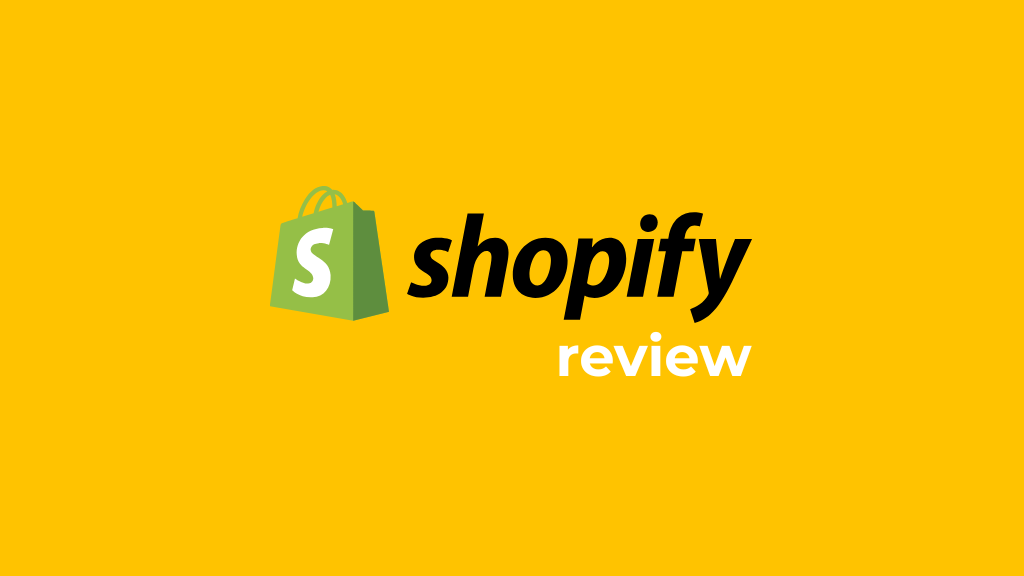In this Shopify review I’m going to spell out all the key pros and cons of one of the web’s best-known ecommerce platforms — and help you work out if it’s the right solution for you.
My quick verdict on Shopify
Shopify is probably the best ecommerce platform for most new merchants. It manages to be both powerful and user-friendly, and is particularly good for international selling, dropshipping and selling at point of sale. If you want to scale your online business, you can usually do this more easily with Shopify than competing products.
For me, the main drawback of Shopify is its hidden costs. Multi-user access is expensive, transaction fees aren’t always avoidable and the platform often nudges you in the direction of apps that can end up adding considerably to your monthly costs.
Overall score: 4.5 / 5
I’ll start things off with a look at the key advantages of using Shopify, and then I’ll move onto the things it could do better.
Advantages of using Shopify
1. It’s easy to use
Shopify is, in general, a pretty user-friendly platform. No coding skills are required to use it, and its learning curve is fairly gentle. As long as you have basic computing skills, you should be able to build an online store with the platform easily enough.
Setting up a Shopify store is straightforward: you pick a theme, customise it via a drag-and-drop editor, add your products and you’re more or less ready to go. The admin interface is clean and intuitive, and even beginners with no web design experience should be able to find their way around the platform pretty quickly.
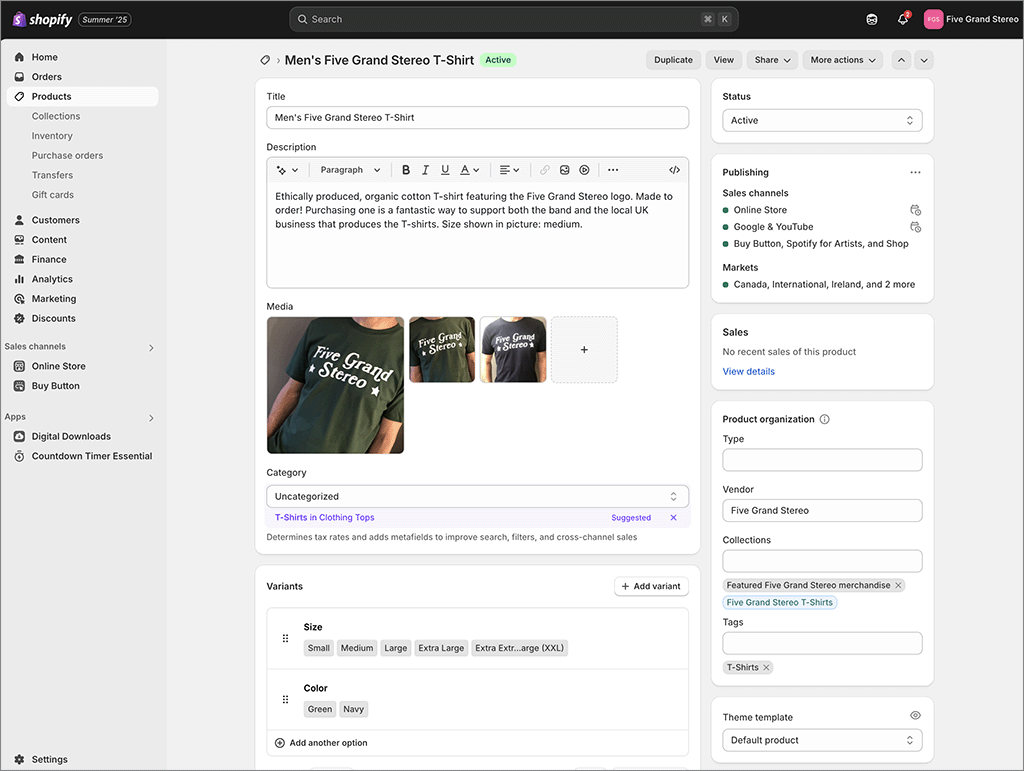
In short, if you’re looking for an ecommerce solution that is light on technical barriers and lets you focus on actually selling, Shopify is hard to beat.
2. It’s a great choice for selling internationally
Shopify is a superb choice for selling internationally. Its ‘Markets’ tool makes it very easy to sell using multiple currencies, multiple languages and multiple domains.
And, when set up correctly, Shopify Markets does a lot of this for you automatically — your store visitors will see a version of your store that contains the appropriate pricing, language and layout for their country.
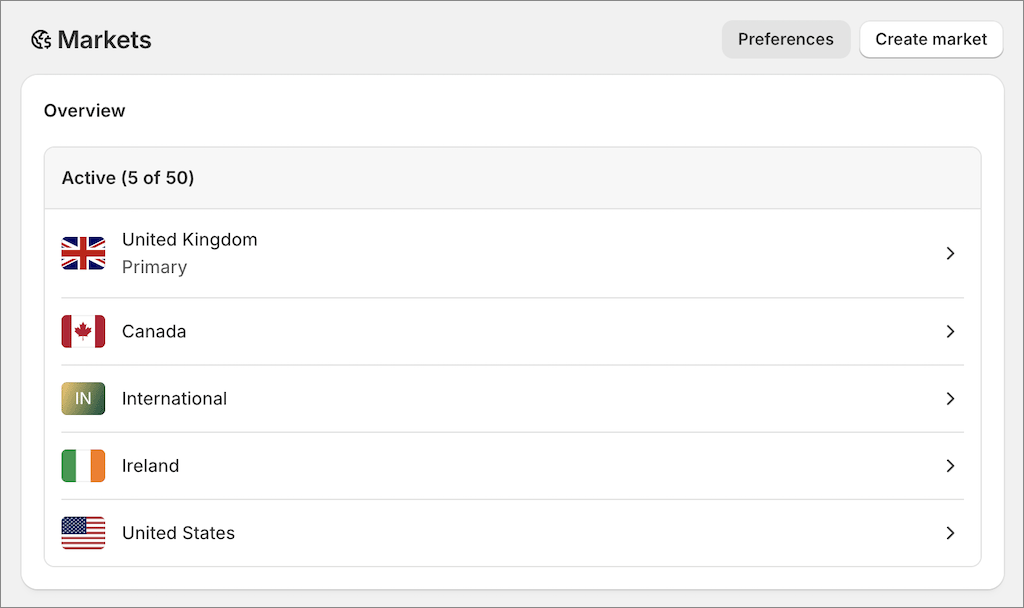
Even in 2025, many of Shopify’s key competitors don’t let you sell in more than one currency at a time (Wix and Squarespace being two particularly notable offenders here).
📖 Related resources:
3. It’s a superb solution for dropshipping and print on demand applications
Dropshipping is a business model where you sell goods without keeping any of them in stock. You take an order, send it to a supplier and they deliver the relevant products to your customer.
Shopify is arguably the best ecommerce platform for merchants who want to dropship, because there is an enormous range of dropshipping apps available for it (at time of writing in November 2025, I found 716 dropshipping apps in its app store). These let you sell a huge variety of goods from a huge range of suppliers.
Shopify is also an excellent choice for print on demand applications, because it integrates very neatly with all the major print on demand services too (Printful, Printify, Gooten etc.).
4. It comes with excellent point of sale features
Point of sale features let you sell not just online but in physical locations too — for example retail outlets, market stalls and events.
Not only does Shopify give you excellent point of sale features, but it bundles them with nearly all its plans, even its competitively-priced ‘Starter’ one (which costs just $5 per month).
A wide range of point of sale hardware can be used with the platform too, all of which is easy to order via a dedicated POS hardware store (see my screenshot below for some examples of the kind of items you can buy).
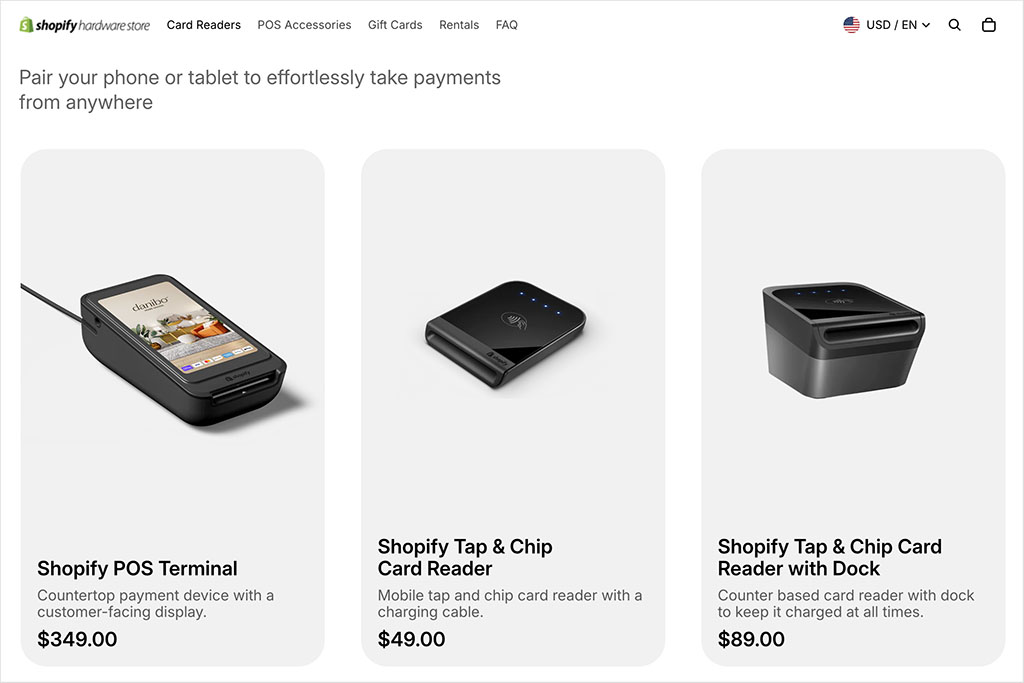
5. It automates tax calculation really well
When you sell in multiple locations, you often end up making sales in places with different tax rates. And this is something that you absolutely have to reflect in the pricing of your products.
Helpfully, Shopify applies the correct tax rates for a lot of countries automatically, and unlike key competing ecommerce platforms is particularly good at meeting the EU’s requirements on applying VAT to digital products (VAT MOSS).
6. It gives you a free email marketing tool, Shopify Email
Shopify comes with its own email marketing tool, Shopify Email. This allows you to run simple email campaigns directly from your Shopify dashboard — without needing to integrate third-party tools like Mailchimp, Omnisend or AWeber.
Shopify Email can be used to send up to 10,000 emails per month for free, and if you go over this limit, the additional costs applied for doing so are reasonable ($1 per 1,000 emails sent).
As for the email builder itself, it’s pretty simple to use and boasts an increasing number of automation features that allow you to create bespoke customer or subscriber journeys (useful for things like facilitating abandoned cart recovery, welcome emails and upsells). It also lets you insert dynamic products into your emails — i.e., it will automatically show your most recently added products or most popular items in your marketing emails.
7 It gives you access to a huge range of apps and integrations
Shopify’s library of apps and integrations is the largest of any ecommerce platform I’ve tested. Around 13,000 apps are available for the platform, and these let you extend the functionality of your store in all sorts of ways.
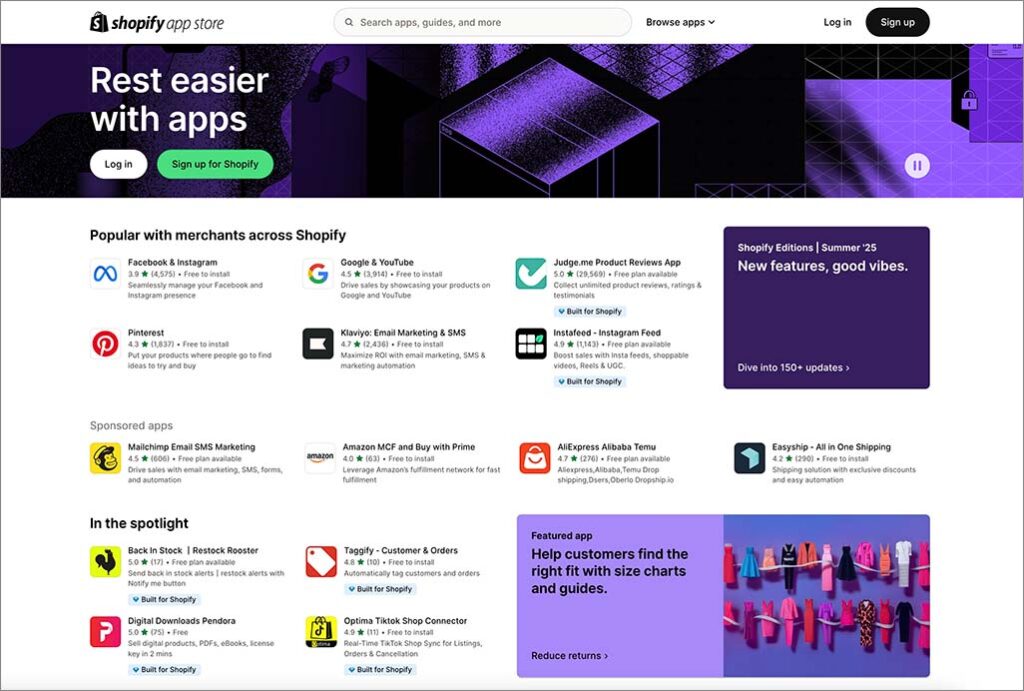
The apps on offer cover everything from advanced product management to shipping to conversion optimization and are really useful when it comes to scaling your ecommerce business — or taking extra control of it.
And speaking of scaling…
8. It’s a truly scalable solution
One of the main reasons so many businesses choose Shopify is because it’s incredibly scalable — it grows with you.
First, and as I discussed earlier, Shopify lets you offer localized shopping experiences in different countries, and set custom pricing for specific regions. This is really not the case with several platforms that might be considered major competitors (for example Wix, Squarespace and GoDaddy).
Second, its point of sale features let you go beyond ecommerce and into the realm of in-person selling.
And third, if your store grows into a large brand, you can upgrade to Shopify Plus — the platform’s enterprise-level plan. This unlocks features designed for large businesses, including:
- faster checkouts
- advanced automation tools
- high-volume traffic management features
- the ability to manage multiple stores from one dashboard
- headless commerce.
All this means that many large corporations — including global brands — use Shopify Plus to power their stores.
9. It’s got a huge userbase
Latest data suggests that over there are over 6 million stores powered by Shopify. This means that you can be confident in the platform — unlike some competing solutions (remember Magento Go?) it is unlikely to be shut down anytime soon, taking your store with it.
Shopify’s large userbase also means that you can be confident of
- continued investment in new features for the platform
- an increasingly well-stocked app store
- an ecosystem and community that can help you troubleshoot any issues you may have with your store.
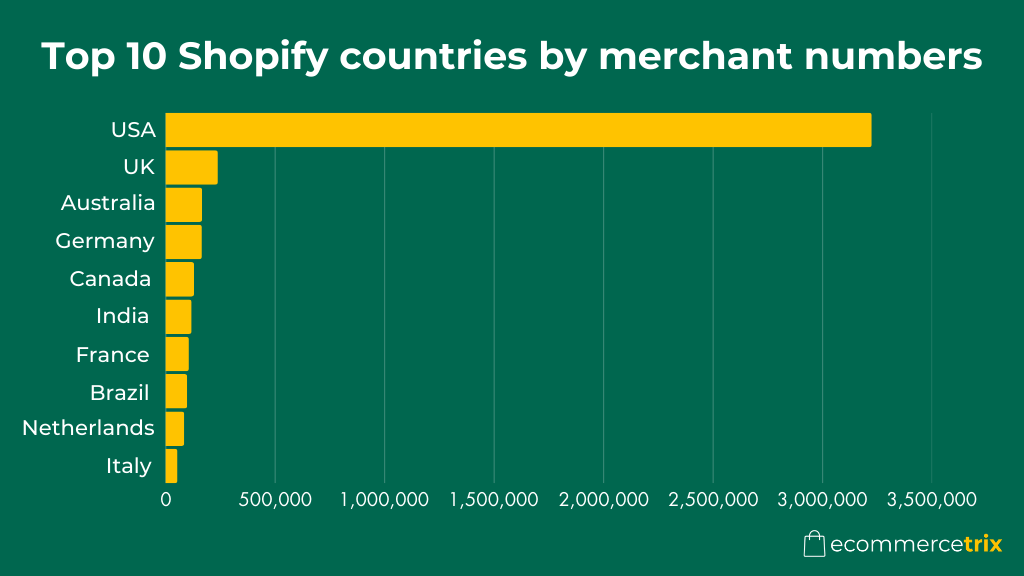
Disadvantages of using Shopify
1. Multi-user access is really expensive
The biggest problem I have with Shopify is probably its approach to multi-user access. It represents a significant hidden cost.
Unlike many of its competitors — including key ones like WooCommerce and Squarespace — Shopify places strict limits on the number of additional staff accounts you can work with.
You don’t get any additional user seats on Shopify’s ‘Starter’ and ‘Basic’ plans, and are limited to just five on its mid-level ‘Shopify’ plan.
So, if you need more than one person to have access to the admin area of your store, you’ll be immediately forced onto a $105 per month ‘Grow’ plan.
This plan isn’t radically different from the cheaper $39 per month ‘Basic’ one — but significantly more expensive.
2. You can’t always avoid transaction fees
You can avoid transaction fees with Shopify if you use its built-in payment processing solution, Shopify Payments — but annoyingly, this isn’t available in a lot of countries.
And if you use a third-party payment gateway with Shopify, you’ll be charged a transaction fee of between 0.6% and 2% on every sale. This isn’t ideal — and many competing solutions won’t penalise you for integrating an external payment processor in this way..
3. The range of free themes available is quite small
Although the free templates that are on offer from Shopify are good, and tailored exceptionally well to ecommerce, there aren’t that many of them available — you can choose from just 24 free themes.
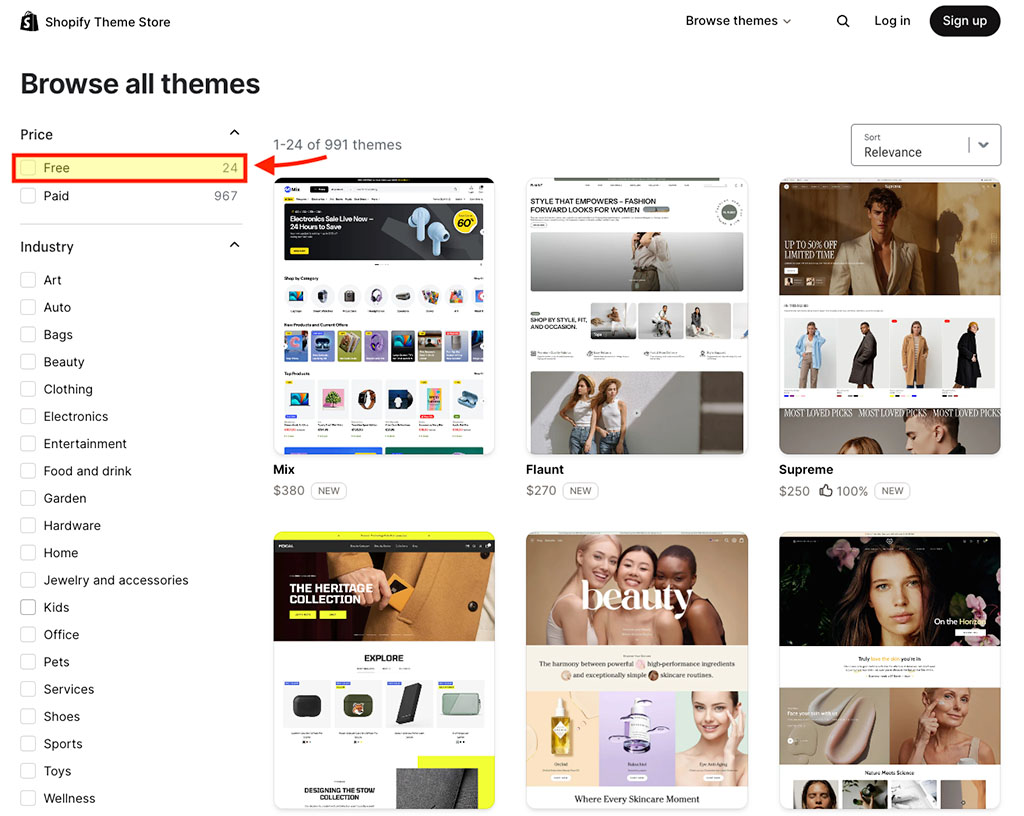
This compares negatively with the huge ranges of free themes bundled with other platforms, including key competitors Wix, Squarespace and WordPress (the first two provide hundreds of free templates to chose from, while WordPress provides thousands).
And, although you can extend your theme choices in Shopify by paying for a premium template, these are expensive.
4. Product option limits are restrictive
Surprisingly, given its ‘industry standard’ status, of the ecommerce platforms I’ve tested, Shopify is one of the least generous I’ve encountered when it comes to product options.
Product options are the different versions of an item that you sell — for example, with a clothing product you might have product options like color, size or material. Oddly, Shopify only lets you work with three of these.
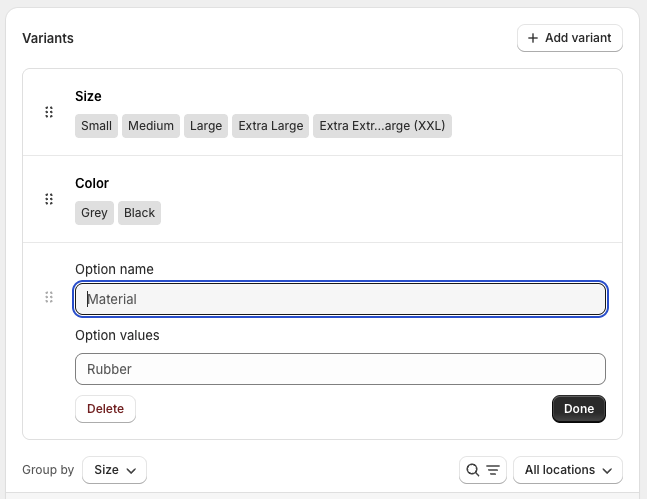
You can lift this restriction by using a third-party app (a popular choice being the suitably-named ‘Infinite Options’ app) but this will involve additional costs.
5. The drag and drop editor is a bit confusing
Although Shopify is in general a user-friendly platform, its drag and drop editor is a bit confusing to use.
Rather than letting you edit individual pages and posts, it lets you design templates. These then house content that you enter into an old fashioned ‘What You See is What You Get’ (WYSIWYG) editor.
This makes for a bit of an odd workflow — competing solutions tend to give you drag and drop tools that are considerably more straightforward to use (Squarespace in particular comes with a much better drag and drop editor).
6. The blogging tool could be better
Blogging is a key way to generate organic traffic to an online store — in fact, it’s usually a vital part of ecommerce SEO. Accordingly, Shopify provides a blogging tool that lets you create articles on topics related to the products you’re selling (or indeed anything else!).
While usable enough, Shopify’s blogging functionality could be a bit better — unlike some of the blogging tools you’ll find in competing solutions, it doesn’t provide you with any drag and drop functionality, backup features or a version history.
Shopify’s post categorization options ar more limited than what you’ll find in more professional blogging setups (like those of WordPress and Squarespace) too.
7. The app costs can mount up
Shopify’s extensive range of apps is one of the key reasons you might want to use the platform over its rivals — but in my view, it’s also an argument against doing so.
On the plus side, it means that you have an extensive range of options for adding functionality to your store and integrating it with other software.
But when testing Shopify, I encountered too many situations where you’re forced to turn to a paid-for app in order to access fairly basic features. For example, adding product review functionality, cookie consent banners, additional product options and file upload fields will often involve buying an app. And doing so can in turn increase your monthly costs, sometimes significantly.
In truth, it can sometimes feel like a feature has been deliberately left out of Shopify in order to nudge you in the direction of its app store.
8. There’s no phone support available on most plans
Shopify used to offer some of the most comprehensive support going — but in recent months have reduced this to live chat only customer service. On the plus side, this is easy enough to find, thanks to a simple ‘Chat with a human’
To locate Shopify support, I found myself having to Google ‘live chat Shopify support’ and then asking an AI assistant for help before I got put through to a human.
To be fair, when I did get through to Shopify support agent, I was happy with the help provided — but the hoops I had to jump through to get to that point were annoying.
You can still get phone support on the enterprise-level Shopify Plus plan, but given that this costs $2,300+ per month, that’s obviously not going to be an option for most users.
Shopify pricing
Plan
Pricing per month (USD)
Starter
$39
Basic
$105
Advanced
$399
Shopify Plus
From $2,300/mo
Note: discounts on the above prices are available if you pay on an annual basis.
User reviews and ratings
What do real-world users make of Shopify? To find this out, I compiled some data on the platform from popular software review sites. The table below breaks this down.
Review site
User rating (out of 5)
Capterra
4.5
G2
4.4
TrustPilot
1.3
TrustRadius
4.4
Average
3.7 out of 5
Data sourced in November 2025.
As you can see, on three of the four review platforms I looked at, the reaction to Shopify was very positive — a 4.5 average score. Trustpilot users were not so keen on the platform however, only rating it 1.3 out of 5 (many of their complaints related to the quality of customer support).
Verdict
Of the hosted store building solutions that I’ve tested, Shopify is one of the very best for users wishing to create an online store, and arguably the best for those who want to use one app to sell online AND in a physical location.
It’s also an extremely good solution for users who want to dropship, run a print-on-demand business or scale their business internationally — its multi-currency features are excellent.
In terms of Shopify’s key downsides, these include its ungenerous pricing approach to multi-user access; its limited flexibility when it comes to product options; the transaction fees that are applied when you don’t use Shopify Payments; and the way that getting your hands on quite a few basic features requires the purchase of an app.
But overall, because of its combination of user-friendliness and powerful features, Shopify is extremely hard to beat. It manages to be both one of the easiest platforms to start selling with, while also one of the most scalable. That’s no mean feat.
Pros and cons summary
☑️ It’s easy to use
❌ Multi-user access is very expensive
☑️ It’s a great choice for selling internationally
❌ Limited product options
☑️ Probably the best option for dropshipping and POD
❌ Relatively few free themes available
☑️ Gives you access to an excellent built-in POS sytem
❌ Drag and drop editor could better
☑️ Great automatic tax calculation features
❌ The blogging features could be better
☑️ It’s a genuinely scalable solution
❌ No phone support on non-enterprise plans
Chris Singleton is the Founder and Director of Ecommercetrix.
Since graduating from Trinity College Dublin in 1999, Chris has advised many businesses on how to grow their operations via a strong online presence, and now he shares his experience and expertise through his articles on the Ecommercetrix website.
Chris started his career as a data analyst for Irish marketing company Precision Marketing Information; since then he has worked on digital projects for a wide range of well-known organizations including Cancer Research UK, Hackney Council, Data Ireland, and Prescription PR. He then went on to found the popular business apps review site Style Factory, followed by Ecommercetrix.
He is also the author of a book on SEO for beginners, Super Simple SEO.
